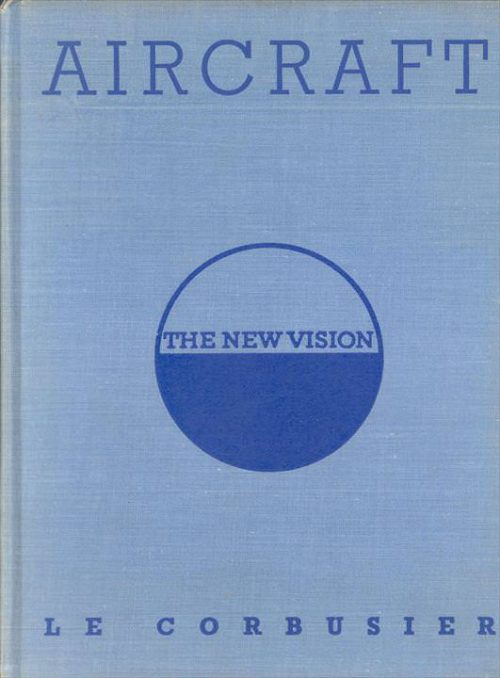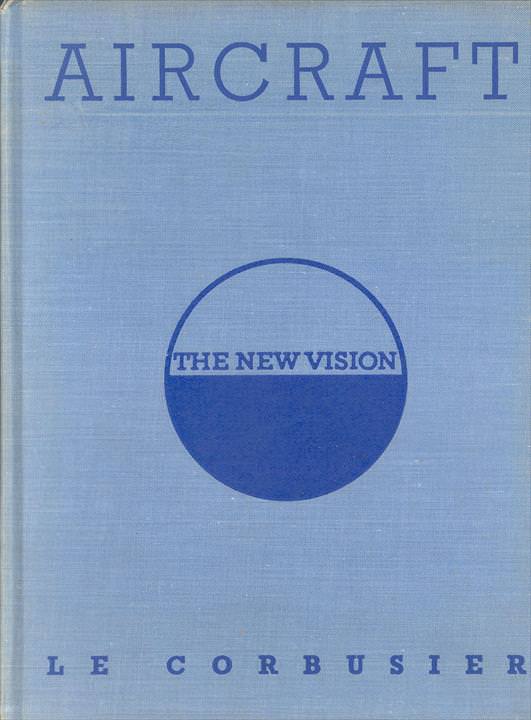Aircraft
Le Corbusier, 1935

© FLC/ADAGP
The Studio, Londres, 1935 ; The Studio Publications (collection The New Vision), New-York, 1935
Author : LE CORBUSIER
The Studio has informed me of its intention to publish a book on Aviation, the desire of the publishers being to inform the general public, questions of technique apart, as to what stimulus there may be in it for contemporary society, divided at the moment between a desire to retrace its steps and to embark on the conquest of a new civilization.
I accepted the task and so that there should be no ambiguity I headed the opening pages with this modest sub-title : ” Frontispiece to Pictures of the Epic of the Air.” Being neither technician nor historian of this amazing adventure, I could only apply myself to it by reason of that ecstasy which I feel when I think about it.
This ecstatic feeling dates from the first Aviation Exhibition at Paris after the War, at which time I was helping to run the Esprit Nouveau, a review which strove to remove the veil which still largely obscured the new era of machine civilization. We gave out labours this confident heading : “A great period has just begun.”
During the publication of L’Esprit Nouveau, i used with a timely impatience the phrase “Eyes which do not see !…” and in three articles I cited as evidence, steamships, automobiles, and airplanes.
The point then was that our eyes did not see… Did not see the budding of a new feeling for plastic beauty in a world full of strength and confidence.
But to-day it is a question of the airplane eye, of the mind with which the Bird’s Eye View has endowed us; of that eye which now looks with alarm at the places where we live, the cities where it is our lot to be.
And the spectacle is frightening, overwhelming. The airplane eye reveals a spectacle of collapse.
Being indissolubly connected in all the fibres of my being with the essential human affairs which architecture regulates ; having waged for a long time, without fear of hatred or ambush, a loyal crusade of material liberation by the all-powerful influence of architecture, it is as an architect and town-planner-and therefore as a man essentially occupied with the welfare of his species-that I let myself be carried off on the wings of an airplane, make use of the bird’s-eye view, of the view from the air, to which end I directed the pilot to steer over cities. And, justly stirred, advised moreover by my friend the poet Pierre Guéguen, to whom I showed the draft of this book, I have added my own title “The airplane indicts.”
Thus the stirring work of the men in the air will in no sense be tinged by my technical ignorance. I seek only to crown their prodigious effort by a salute addressed to the heads of countries and cities, an appeal to them to weigh up the misery they have allowed to establish itself.
And inciting them-finally to take the steps which will provide an attainable amount-materially realizable-of happiness : of “essential delights.” The dwelling of modern times, a dwelling in harmony with the state of modern conscience, to which a hundred years of sensational developments have brought us.
Paris, May, 1935.
